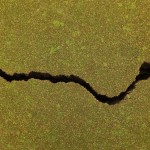Mapped: The Latest Earthquake Swarm in Texas (Update)
View North Texas Earthquakes in a larger map
A map of recent earthquakes (in red) and oil and gas wastewater disposal wells outside of Fort Worth. Active disposal wells are in green; inactive wells are in yellow. Map by Michael Marks/Terrence Henry
Ten Seventeen* earthquakes in just a month, the biggest a magnitude 3.6. That’s what small towns like Azle and Springtown Northwest of Fort Worth have had to deal with recently. (*More quakes have struck Azle since this story was originally published: on November 21, 23, 25, 26 and 29. The Nov. 25 quake measured 3.3.)
The region is also home to several disposal wells, which are used to store massive amounts of wastewater from oil and gas drilling. In other parts of the Barnett Shale drilling area disposal wells have been linked to similar series of quakes. You can see where the quakes have occurred recently around the town of Azle, as well as active and inactive disposal wells in the region, in the map above. The quakes are in Tarrant and Parker counties.
Cliff Frohlich, Associate Director of the Institute for Geophysics University of Texas at Austin, has lead research into links between oil and gas drilling activity and manmade earthquakes. His study of earthquakes in the Barnett Shale found that disposal wells were responsible.
The current string of quakes hasn’t been known to have caused any serious damage yet, but it has rattled residents. “It shook the ground, and it sounded like a boom,” one resident of Azle tells the Fort Worth Star-Telegram. “I honestly thought it was an explosion, and I thought it might have something to do with the gas wells behind our home.”
Earthquakes measuring 4.0 or higher are more generally known to cause damage. At level 5.0 or higher, quakes can damage old or poorly-designed buildings. But the level of damage can depend on the location of the quake. “An earthquake in a densely populated area which results in many deaths and considerable damage may have the same magnitude as a shock in a remote area that does nothing more than frighten the wildlife,” the US Geological Survey notes on their webpage.

